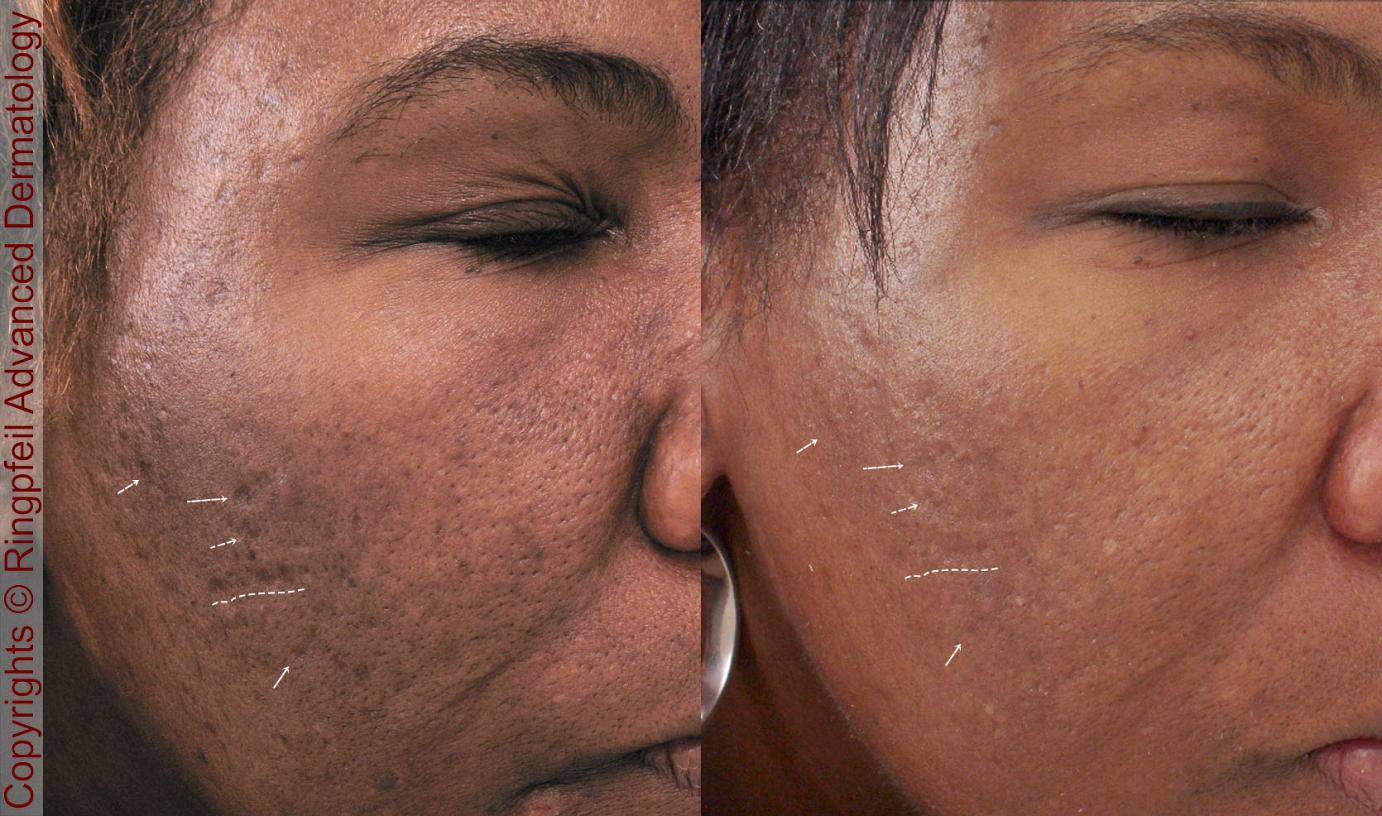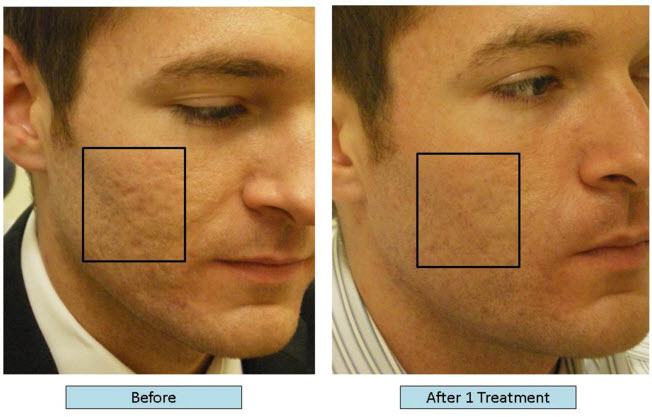Reliable Acne and Acne Scars Treatment: Clear Your Skin with Confidence
Reliable Acne and Acne Scars Treatment: Clear Your Skin with Confidence
Blog Article
Understanding the Numerous Skin Problem and Efficient Treatment Options for Acne Marks
Acne scars represent a complex interaction of skin disease that considerably impact people' self-worth and total skin wellness. Recognizing the unique kinds of acne marks-- hypertrophic and atrophic-- along with their underlying causes, is pivotal for figuring out efficient therapy approaches. Different restorative alternatives exist, ranging from innovative skin-related treatments to all-natural solutions. Nevertheless, the efficiency of these therapies frequently depends upon customized evaluations by qualified experts. As we discover the landscape of acne mark management, it ends up being evident that the trip towards more clear skin may include greater than simply topical remedies.
Kinds Of Acne Marks
The two main groups of acne scars are atrophic and hypertrophic scars. These marks are more categorized right into three subtypes: ice choice scars, which are slim and deep; boxcar marks, which are broader and have well-defined sides; and rolling marks, which produce a wave-like look due to irregular skin appearance.
In contrast, hypertrophic marks result from an overflow of collagen throughout the healing process, causing elevated locations on the skin. These scars are frequently firm and can vary in color, occasionally appearing red or darker than the surrounding skin.

Sources Of Acne Scarring
Marking occurs as an outcome of the body's all-natural recovery reaction to swelling and injury triggered by acne lesions. When acne types, it sets off an inflammatory feedback, leading to the release of various cytokines and development elements that promote recovery. However, this process can occasionally bring about extreme tissue formation or inadequate repair, resulting in scars.
The primary causes of acne scarring consist of the severity of the acne itself, period of the sores, and private skin types. Severe inflammatory acne, such as nodules and cysts, is more probable to lead to scarring as a result of deeper cells damages. Furthermore, inappropriate handling of acne sores, such as squeezing or picking, can aggravate cells injury and inflammation, enhancing the chance of scarring.
Genetic proneness likewise plays a considerable duty; individuals with a household background of scarring are at a greater threat. Furthermore, skin type and color can influence mark formation, as darker complexion may experience post-inflammatory hyperpigmentation, while lighter skin might develop atrophic scars.

Treatment Options for Scarring
Efficient treatment choices for acne scarring differ depending upon the kind and seriousness of the scars. Usually categorized right into atrophic, hypertrophic, and keloid scars, these conditions require tailored techniques for optimal results.
For atrophic marks, which are defined by a loss of cells, treatments such as chemical peels, microdermabrasion, and laser therapy are generally used. These techniques promote skin renewal and boost collagen production, consequently boosting skin appearance. Subcision, a minimally invasive procedure, can also be efficient by separating fibrous bands underneath the skin.
Hypertrophic and keloid marks can be extra challenging to deal with. Choices consist of corticosteroid injections to lower inflammation and squash the marks. acne scars treatment. In many cases, cryotherapy or laser therapy might be try this web-site recommended to reduce their look
Surgical options are offered for severe scarring, where excision or skin grafting may be required. It's necessary for individuals to hop over to these guys seek advice from a skin specialist to examine their certain mark kind and go over the most appropriate treatment strategy. Combining several therapies usually produces the very best results, guaranteeing that each individual's distinct skin problem is dealt with successfully.
Natural Remedy and All-natural Solutions
Natural remedies and home solutions can give an obtainable technique for individuals seeking to enhance the appearance of acne scars. Various ingredients found in the home kitchen have shown prospective benefits in boosting skin structure and advertising recovery.
Using fresh aloe vera gel directly onto the scars can aid boost skin hydration and lower soreness. Honey possesses all-natural antibacterial and moisturizing qualities that can help in mark healing.
An additional effective option is lemon juice, which works as an all-natural exfoliant and can lighten hyperpigmentation. It ought to be utilized very carefully, as it may create photosensitivity. Oat meal masks are also useful; their gentle exfoliation can assist eliminate dead skin cells while comforting irritation.
Crucial oils, such as tea tree oil and lavender oil, can better sustain scar recovery due to their antimicrobial buildings. It is crucial to carry out a patch examination prior to using any type of solution to guarantee there are no damaging reactions. These natural services can be a complementary method in the trip to lessen acne scars.
Preventing Future Scarring
Adopting an aggressive method to skincare can considerably reduce the danger of developing future acne marks. Among the key techniques is to take care of acne effectively as it emerges (skin rejuvenation treatments). This entails making use of non-comedogenic skin care products and drugs recommended by dermatologists that target check my blog acne without irritating the skin. Routine cleaning, peeling, and hydration can help preserve skin health and stop clogged up pores.
In addition, preventing the lure to pick or squeeze acne lesions is vital, as this can lead to inflammation and subsequent scarring. Instead, individuals ought to concentrate on applying topical therapies that advertise recovery and minimize swelling. Active ingredients such as salicylic acid, benzoyl peroxide, and retinoids are known for their effectiveness in taking care of acne and lessening marks.

Last but not least, preserving a healthy and balanced diet regimen abundant in anti-oxidants and remaining moisturized assistances skin regrowth. By implementing these preventive steps, individuals can dramatically lower their risk of future scarring and advertise overall skin health and wellness.
Conclusion
In final thought, a thorough understanding of acne scars, incorporating both hypertrophic and atrophic kinds, is crucial for effective therapy approaches. Assessment with a dermatologist continues to be imperative to design individualized approaches that consider individual skin types and scar extent, eventually improving the efficiency of mark management strategies.
Acne marks represent a complicated interaction of skin problems that substantially impact people' self-confidence and general skin health. The 2 main classifications of acne marks are hypertrophic and atrophic marks. These marks are more categorized right into three subtypes: ice choice scars, which are deep and narrow; boxcar scars, which are broader and have well-defined sides; and rolling marks, which create a wave-like look due to uneven skin texture.
A detailed assessment with a skin specialist can assist figure out the most appropriate treatment, taking into account the individual's skin type, mark intensity, and general skin wellness.
Consultation with a skin specialist remains necessary to develop customized techniques that consider private skin kinds and mark intensity, inevitably boosting the effectiveness of scar monitoring techniques.
Report this page